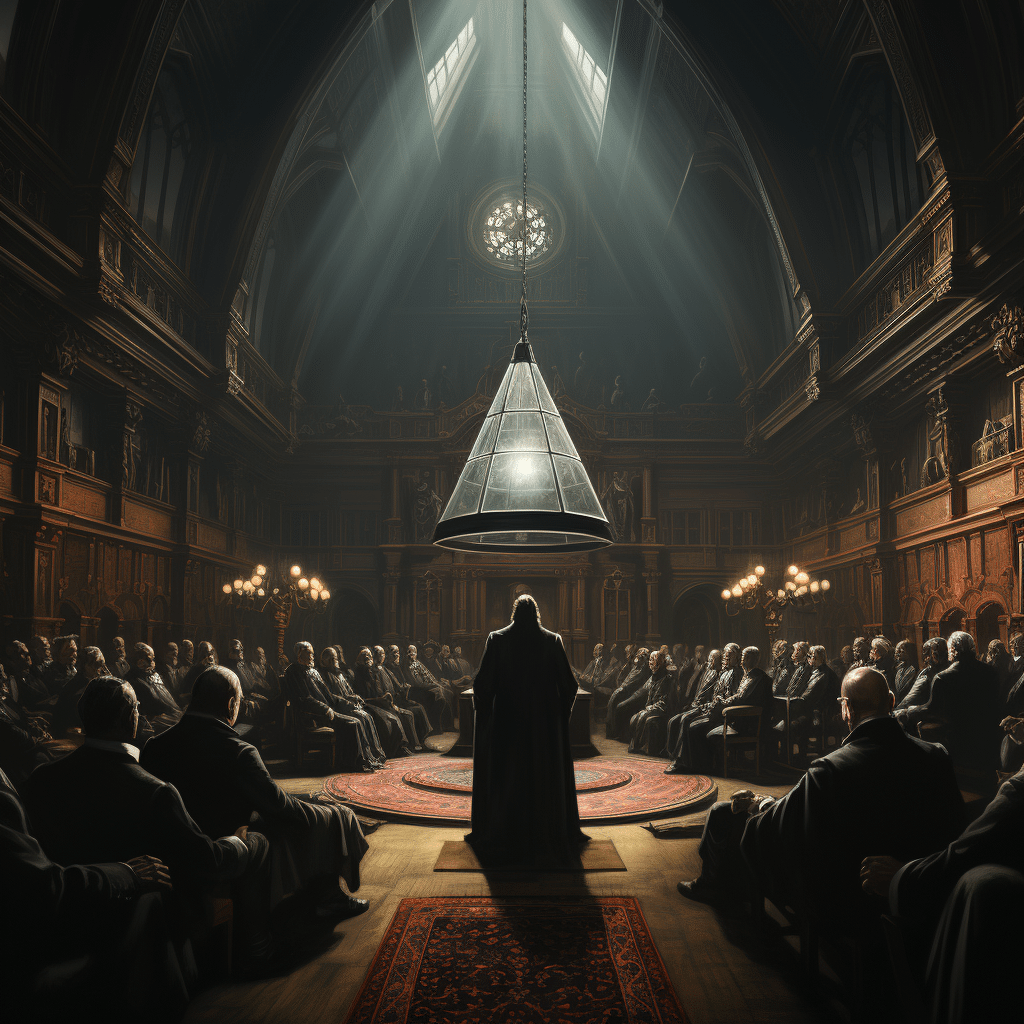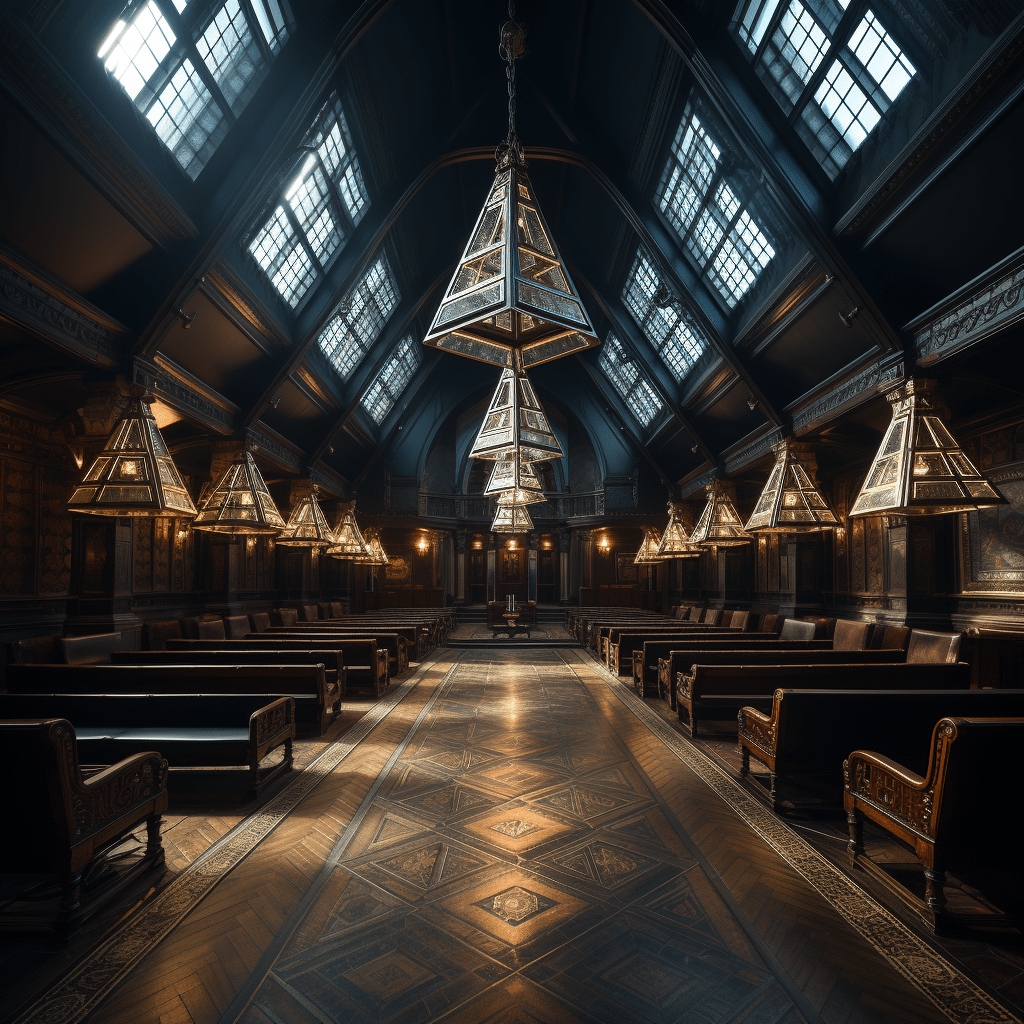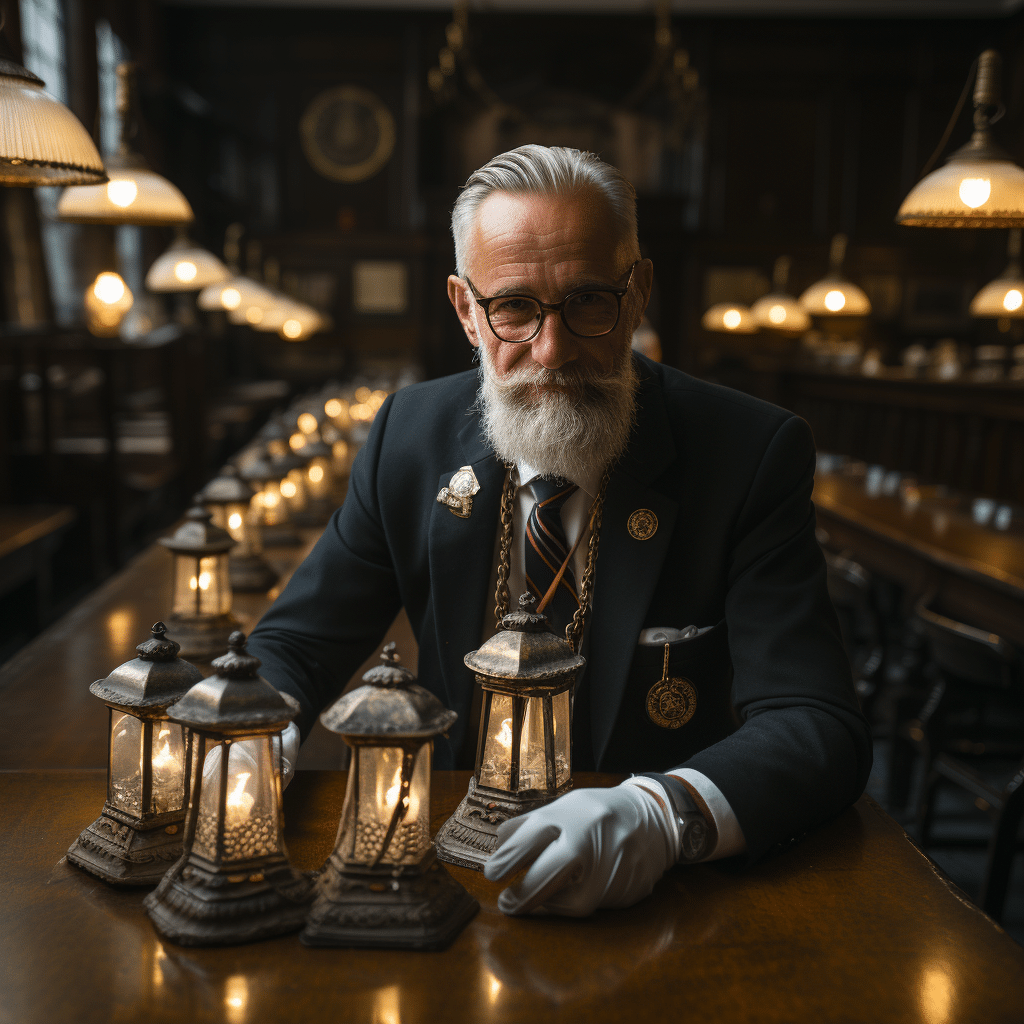Freemasonry, with its rich history and pervasive cultural footprint, has long been shrouded in mystery and intrigue. But despite the myths and rumors, the real question persists among the curious: What do Freemasons do at meetings? The answer involves tradition-rich rituals, community service, education, and a touch of the secretive flair that has made Freemasonry the subject of fascination for centuries.
The Enigmatic World of Freemasonry: A Primer on Their Conclaves
Freemasonry can be traced back to the stonemasons of Medieval Europe, with formal organizations appearing in the 17th century. These guilds of masons evolved into the modern Freemasons: a fraternal organization bound by shared rituals, symbols, and a commitment to ethical conduct and mutual support.
Freemason Lodges, the basic organizing units of Freemasonry, can be found worldwide. Every Lodge, like a hive buzzing with activity, orchestrates meetings with a focus on rituals and fellowship among its members. These gatherings are the cement that solidifies the moral and philosophical structure of the fraternity.

Rituals and Rites: The Core of Freemason Gatherings
Freemason ceremonies are steeped in allegory and symbolism, with opening and closing rituals that structure each gathering. It’s like an elaborate dance, each step imbued with historical significance. The rituals serve as a conduit for imparting age-old lessons, almost like pages from a Manga demon tale, touching upon virtue, integrity, and enlightenment.
These meetings hinge on symbolism; every emblem, every gesture holds weight, serving as reminders of the principles every Freemason strives to embody. “So mote it be,” they often conclude, echoing a shared dedication to bringing these ideals to fruition.
| Aspect of Meeting | Description and Details |
|---|---|
| Opening | Members open the meeting with a traditional ritual, which includes reciting the phrase “So mote it be.” |
| Administrative Business | Discussion of minutes, finances, planning of upcoming events, and proposals of new members. |
| Degree Work | Ceremonies for conferring degrees to members as part of their progression through Masonic ranks. |
| Masonic Education | Lectures or discussions on Masonic history, symbolism, philosophy, and rituals. |
| Charity Planning | Discussing and planning charitable activities and community involvement. |
| Fellowship | Building bonds among members, sharing experiences, and supporting each other in their personal growth. |
| Closing | Formal conclusion of the meeting with customary rituals. |
| Festive Board | Also known as “Harmony,” a formal dinner post-meeting that may include toasts, songs, and further camaraderie. |
From Charity to Fellowship: The Varied Agendas of Masonic Meetings
Charity is a cornerstone of Freemason ideology. Members deliberate on ways to support communities, aligning with the ethos of upholding public welfare. Their plans can be likened to the meticulous strategies seen in dwarf fortress adventure mode, yet these real-life blueprints aim to construct more than just virtual castles; they seek to build a sturdier society.
The value of camaraderie cannot be overstated as well. Lodges serve as networks where members foster personal and professional ties, united by shared values and mutual aspirations. For example, lodge meetings might occasionally resemble a May 2022 calendar—packed with social activities, much like an organized consortium for betterment.

Education and Enlightenment: Masonic Lectures and Discussions
During meetings, Masonic education comes to the fore. Lectures cover a range of subjects, from Masonic history to contemporary moral dilemmas, encouraging members to contemplate their own growth alongside societal progress.
This commitment to enlightenment is a continuous journey. Through such lectures—akin to a body armor drink for the soul—Freemasons reinforce their quest for knowledge and the evolution of character.
The Financial Underpinnings: Debunking the Myth of a Freemason Salary
A popular misconception suggests Freemasons receive a salary for their involvement, but this couldn’t be further from the truth. Instead, members contribute dues to support Lodge operations and philanthropic initiatives. Their financial model is more a collective piggy bank than a wage system, echoing a commitment to propriety that underpins their endeavors.
Financial transparency is paramount within Lodges, ensuring members have clear insight into how funds are allotted and utilized for charitable purposes.
Leadership and Administration: The Business Side of Freemason Meetings
Lodges are organized democratically. Officers, elected by members, play pivotal roles during meetings, akin to the tactical lineups in a real betis vs fc barcelona soccer match. Each member has a voice, and decisions are made collectively—a reflection of the fraternity’s egalitarian spirit.
Secrecy and Privacy: Why Some Masonic Activities Remain Confidential
While most Freemason activities are innocuous, the brotherhood has always prized discretion, rarely divulging the specifics of their rituals. This discretion is historical—a tradition rather than a necessity. The air of mystery is part of their identity, though in recent years, an increased push for transparency has bridged the gap between public curiosity and Masonic privacy.
Beyond the Lodge: Freemasons’ Impact on Wider Society
Freemasons have made their mark far beyond the reaches of their Lodges, impacting social and political realms in subtle but profound ways. Like a side Eyeing meme that subtly shifts the focus, Freemasons have historically influenced progress and philanthropy, often without overt recognition.
Instances of Freemason-influenced advancements range from the arts to the drafting of national policies, revealing a group whose ethos and actions permeate more than just the confines of their meeting halls.
Conclusion: Demystifying Freemasonry through Transparency and Education
Debunking myths about Freemasonry, particularly those regarding what do Freemasons do at meetings, is best achieved through exposure and education. The organization thrives on principles of self-improvement, reliance on a shared moral compass, and a commitment to the welfare of all—a social and philanthropic mission aimed at chiseling a better world.
In modern society, Freemasonry faces the challenge of maintaining tradition while adapting to emergent societal norms—an evolution akin to the constant ebb and flow of what is considered attractive in Which people are most attractive.
As the future of Freemasonry unfolds, one can imagine Lodges around the world continuing to practice their time-honored rituals, bolster their communities with charity, and pursue the enlightenment of their members through education and fellowship. In essence, Freemasonry’s commitment to crafting not only steadfast individuals but also a more resilient and compassionate society remains as solid as it has ever been.
And in the grand tapestry of service and secrecy, enlightenment and tradition, it’s evident that the answer to “what do Freemasons do at meetings?” is far more intricate and altruistic than one might assume. So, as the gavel sounds and the Lodge adjourns to its festive board, where toasts and songs resonate, the answer becomes as clear as the charitable works they perform—a harmony of personal growth and societal commitment, all pledged under the venerable Masonic banner of “so mote it be.”
What Do Freemasons Do at Meetings?
Ever wondered what unfolds when Freemasons gather, skeletons in their collective closets aside? Masonic meetups are as meticulously lined up as a real Betis Vs Fc barcelona Lineups. Each event is strategically planned, much like a coach prepares for an important game. Members delve into a variety of topics, but don’t get too excited; you won’t find Ministry of Magic secrets here. Instead, expect time-honored rituals, charitable discussions, and plenty of fraternal bonding. It’s less ‘cloak-and-dagger’ and more ‘apron-and-gavel’ as they rigorously follow age-old traditions and ceremonies.
Hold up, before you guess they’re stuck in the past like a broken record, think again! Masonic lodges, much like senior Communities, aren’t just about reflecting on the long-standing legacy of yesteryears. These communities are hubs of activity, bustling with programs to support education, health services, and other initiatives positively shaping lives. Plus, the convivial banter at Masonic soirees can be as gripping as discussing the twists in a manga like starving anonymous. Who knew?
Now, you might be picturing cryptic rituals and handshakes shrouded in secrecy. Sure, Freemasons value their privacy – after all, isn’t everyone a bit protective of their inner workings, like that time when When Did Genshin impact come out and gamers everywhere scrambled to uncover every hidden in-game secret? In their meetings, Freemasons might discuss lodge business, engage in philanthropic planning, or partake in educational sessions.
And, while it all sounds grandiose and serious, don’t be startled if you hear a peal of laughter emanating from within those lodge walls. Masons are known to share a good joke as eagerly as historians share dusty trivia. So there you have it, a peek into the Masonic world – as fascinating, multifaceted, and community-oriented as the most captivating of cultures.

What are Freemason duties?
– Freemason duties include offering mutual support to fellow members, practicing personal and community charity, and adhering to the lodge’s teachings on morality and good citizenship. You know, it’s all about lending a helping hand and making the world a bit brighter for everyone.
What is the purpose of Freemasons today?
– Today, Freemasons are all about social bonding and philanthropy. As Margaret Jacob puts it, they aim to lead virtuous lives, chock-full with social-oriented activities. So, in essence, they’re like a group of mates striving to do good and grow better together.
What are Masons beliefs?
– Masons believe in the presence of a supreme being, the immortality of the soul and embrace values of morality, charity, and lawful conduct. Essentially, they’re big on higher powers, being upright chaps, and bending over backwards to do the right thing.
What do Masons say at the end of a prayer?
– At the end of their prayer, you’ll hear Masons say “So mote it be,” kind of like the rest of us saying “Amen.” It’s their way of wrapping up with a “That’s that” or “Let it be done.”
What is the highest position in the Masons?
– The highest position in the Masons is the Grand Master, who reigns supreme over a Grand Lodge or Masonic jurisdiction. It’s basically like being the head honcho or the big cheese of the Masonic world.
What do Masonic jewels mean?
– Masonic jewels are symbolic trinkets worn by the Freemasons. They’re not just for show – they represent various offices or achievements within the fraternity, sort of like merit badges for grown-ups.
How many presidents were Masons?
– A total of 14 U.S. presidents were confirmed to be Masons, from George Washington to Gerald Ford. Talk about having a brother in the Oval Office!
What is the 33 degree Masons?
– The 33rd degree Mason is a high honor conferred to Freemasons who have shown significant dedication in their fraternity. It’s like getting a gold star in the Masonic arena, a real feather in your cap.
What happens in a Masonic temple?
– In a Masonic temple, there’s a mix of business, ceremonies, educational lectures and sometimes a cheery dinner with toasts and song. Picture it like a cross between a company boardroom and your annual family reunion.
What is a Masonic life?
– A Masonic life is one committed to the values of morality, charity, and community service, all the while hanging out with your Masonic buddies. It’s about being the best you can be and doing a solid for your fellow man.
Can a Baptist be a Mason?
– Can a Baptist be a Mason? Sure, as long as they believe in a superior being and the soul’s immortality. It’s all about faith and not being picky about the label on your church door.
What is the prayer for the Master Masons?
– The prayer for the Master Masons basically aims to remind them of their values and responsibilities. It’s like a little pep talk with a divine twist, keeping ’em on the straight and narrow.
What should I wear to a Masonic meeting?
– If you’re hitting a Masonic meeting, think business attire. Guys normally go for a suit and tie – the kind of getup you’d don for a fancy job interview or a court date.
What is the motto of the Masons?
– “So mote it be” – that’s the motto of the Masons, kind of their version of “Let’s make this happen!”. It’s all about putting words into action, with a bit of an old-timey flair.
What is the golden rule in Masonic?
– The golden rule in Masonic is treating others as you wish to be treated – a timeless classic of “do unto others.” It’s basically “play nice with your brothers,” Freemason style.
What are the duties of the inner guard?
– The duties of the inner guard are like being the bouncer for the lodge. They’re tasked with keeping out the uninvited and making sure only the legit members get past the velvet rope.
What is the 33 degree Masons?
– The 33rd degree Mason is like a VIP status conferred to those who’ve shown exceptional dedication. Think of it as the ultimate pat on the back in the world of Freemasonry.
Do Masons believe in God?
– Masons definitely believe in God, or at least a Supreme Being, by any name. It’s non-negotiable – no atheists in this clubhouse, they’re all about the man upstairs.
What are the duties of the junior warden?
– The junior warden’s duties are a bit like being the vice president of operations – managing lodge events, keeping an eye on refreshments and ensuring that harmony prevails. Basically, they’re the lodge’s head party planner with a dash of peacemaker.



